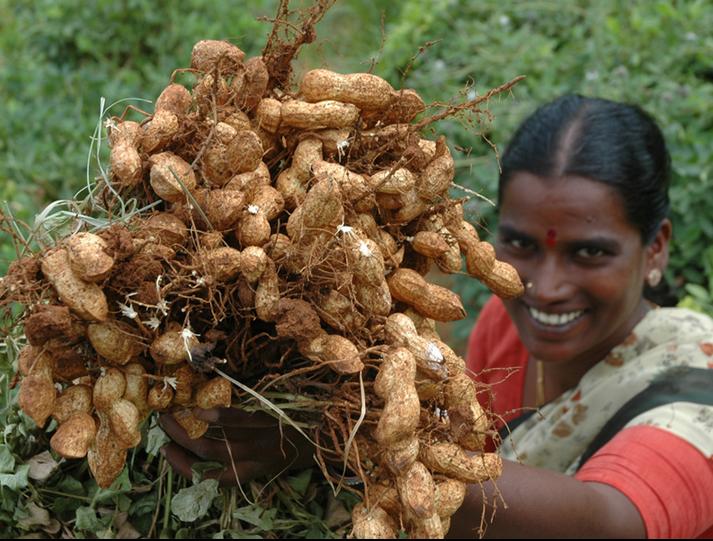By: Sandhya Sekar
Send to a friend
The details you provide on this page will not be used to send unsolicited email, and will not be sold to a 3rd party. See privacy policy.
[THIRUVANANTHAPURAM] An international team of researchers has sequenced the peanut genome, making it possible to breed more productive, more resilient varieties of an oil-rich legume that is a cheap source of nutrition in many countries in Asia and Africa.
The International Peanut Genome Initiative, a multinational effort of which the Hyderabad-headquartered International Crops Research Institute for the Semi-Arid Tropics (ICRISAT) was a part, announced the successful completion of a three-year-long project on the peanut, or groundnut, on 3 April.
The genome of an organism contains the whole of its hereditary information.
The peanut, Arachis hypogaea, is a cash crop in developed countries, though a source of sustenance in developing countries. Groundnut production is concentrated in Asia and Africa where the crop is grown in small, rain-fed landholdings. Globally, 24 million hectares of land are under peanut cultivation, producing 40 million metric tonnes of the legume annually, says a release from ICRISAT.
The cultivated variety is a natural cross between two wild species common in Argentina that happened 4,000—6,000 years ago. The cross between A. duranensis and A. ipaensis resulted in a polyploid, a species with more than one genome. In fact, the cultivated peanut has two sub-genomes.
Stored in seed banks some decades ago, the two ancestor species proved instrumental in sequencing the genome of the cultivated peanut.
The two wild ancestors were excellent models for the two sub-genomes; A. duranensis served as a model for the A sub-genome and A. ipaensis for the B sub-genome. Geneticists now have a “molecular map” and can access to 96 per cent of all the genes in the peanut genome.
“The genome sequence can help in modernising breeding practices. For instance, we can now use molecular markers to enhance selection efficiency — this can halve the time needed to create a new variety,” says Rajeev Varshney, research programme director of grain legumes at ICRISAT.
“We would like to develop disease-resistant and drought-tolerant varieties,” Varshney tells SciDev.Net.
“The two parent species are endowed with several economically important traits, mainly resistance to fungal pathogens,” says T. Radhakrishnan, principal scientist at the Directorate of Groundnut Research, Junagarh, Gujarat state. Infection with the fungus Aspergillus flavus is one of the main threats to groundnut crops.
This article has been produced by SciDev.Net's South Asia desk.














